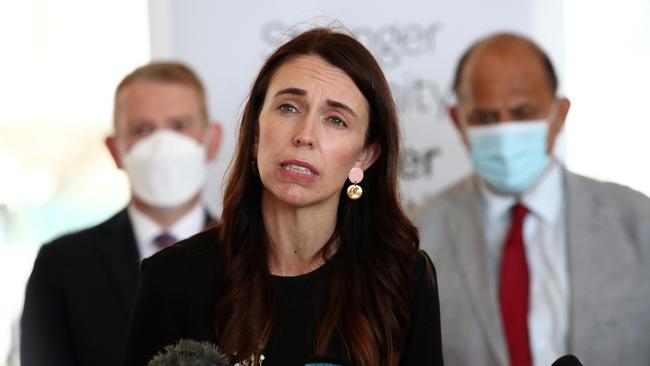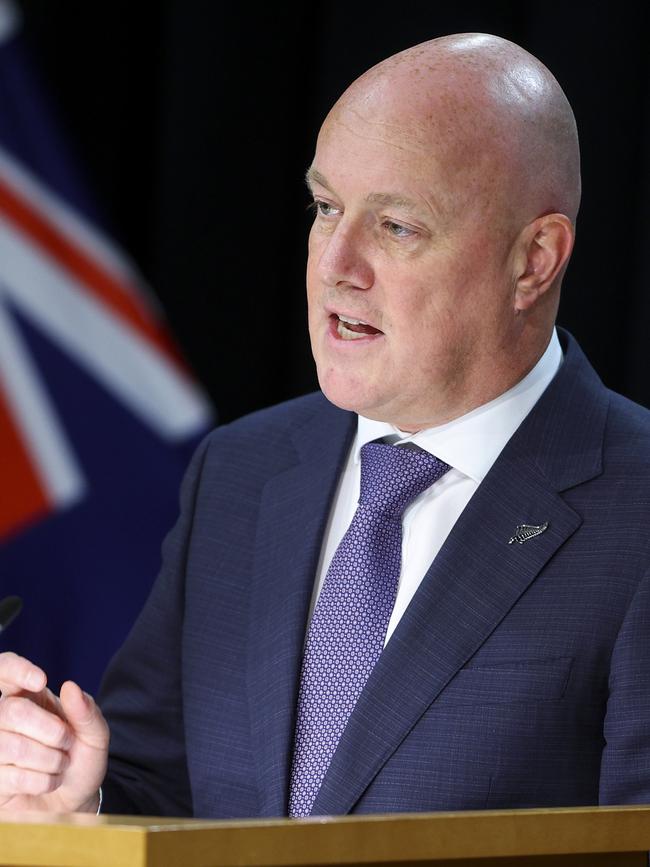
In March 2020, The Guardian lectured Swedish Prime Minister Stefan Lofven on his “Russian roulette-style” Covid-19 strategy. It reported “leading experts” were critical of Lofven for prioritising economic activity over public health. The country’s Covid death toll had reached the alarming total of 25. “How many lives are they prepared to sacrifice so as not to risk a greater impact on the economy?” asked epidemiologist Joacim Rocklov.
By contrast, The Guardian and other pro-lockdown news outlets were fulsome in their praise of Jacinda Ardern and her plan to eliminate the virus in New Zealand. Ardern had responded “with clarity and compassion”, The Guardian gushed back in April 2020.
“New Zealand isn’t just flattening the curve. It’s squashing it,” wrote Washington Post correspondent Anna Fifield.
Fifield had just been to South Korea, where she was “shocked” that airport officials had failed to take her temperature. “I was told simply to self-isolate for 14 days,” she said.
Ardern’s announcement in June 2020 that the virus had been eliminated in New Zealand proved to be somewhat premature. The curve wasn’t flattened. That was delayed until March 2022, when the country eventually crawled out from under the bed.
The chart measuring Covid cases in New Zealand from April 2022 mirrors the chart for Sweden two years earlier: a steep rise to around 2.5 million cases within the first six months, at which point it begins to flatten. New Zealand’s official tally of Covid deaths per million is 1163, 40 per cent higher than it is among the thermometer-dodging South Koreans. It is higher than every state in Australia, except Victoria. It is three times higher than Singapore and 40 per cent higher than the global average.
In October 2021, Ardern told New Zealanders “there is clear evidence the virus finds it harder to spread in vaccinated environments”. Yet in New Zealand, as in Australia, all but a handful of deaths occurred after the rollout of the vaccines, which suggests, at the very least, they were not all they were cracked up to be.
The health benefits of lockdowns were marginal at best. The costs to our social fabric and wellbeing were incalculable.
Among the hundreds of submissions to the federal government’s Covid inquiry released last week are gruelling personal testimonies that speak to the human cost: Australians trapped in India and banned from returning home; forced imprisonment in mediocre hotel rooms upon return; increases in mental illness and family violence, and; unvaccinated Australians treated as lepers.
Human Rights Commissioner Lorraine Finley concludes that Australians endured “some of the most significant restrictions of our human rights ever imposed during peacetime”.
The Commission received 2662 complaints, the biggest response to a single issue since it was established.

It would be nice to put this horrible period behind us and move on. Yet the fiscal burden of Covid will be on our shoulders for some time. Somewhere along the line, we have forgotten that closing borders and social distancing are inherently expensive. Businesses and individuals must be compensated, and even the most ridiculous regulations must be enforced.
So it is hardly surprising government spending in Australia and New Zealand was among the highest in the world. Australian governments, both state and federal, spent the equivalent of 18.2 per cent of GDP to fight Covid, according to data compiled by the International Monetary Fund.
New Zealand was second in the Covid spending rankings at 19.3 per cent of GDP. The US was in first place at 25 per cent of GDP. By contrast, South Korea spent 6.4 per cent of its GDP on pandemic management, and Sweden spent just 4.2 per cent. It would be unfair to criticise Ardern based on hindsight. Like Scott Morrison, she was not to know the path the pandemic would take, nor that attempts to flatten the curve would eventually be futile.
It seemed reasonable to use their countries’ advantages of distance, secure borders and expertise in quarantine procedures to keep the virus out. Equally, however, we must now be honest enough to acknowledge that our governments made the wrong call, unless we are determined to make the same mistakes next time around.
The New Zealand economy will be burdened with the long fiscal tail of the 2020-2022 pandemic for years, if not decades, to come. Australia’s strong economic recovery has masked the fiscal cost of Covid. It vindicates the Morrison government’s decision to direct spending to temporary programs to keep people in jobs and businesses trading rather than bake in permanent welfare spending.
In part, it stems from the good fortune of a resource-driven economy. New Zealand, however, is in a world of pain. Its debt-to-GDP ratio has risen from 27 per cent in 2019 to 37 per cent today. The cost of servicing debt is a significant budget item.
Worse still, it has the second-highest structural deficit in the world, according to the World Bank’s data. The gap between what the government is committed to spend and the revenue it can raise has considerably widened.

The country’s new Prime Minster, Christopher Luxon, has made strong progress in unwinding Ardern’s woke legacy, as the leader of a three-party coalition between the Nationals, Winston Peters’ New Zealand First and David Seymour’s ACT party.
He has reversed the Maorification program, insisting English should remain the country’s first language, begun refocusing the curriculum and banned smartphones from schools, repealed Ardern’s ute tax, scrapped the prisoner reduction target and introduced legislation to crack down on crime gangs.
But the fiscal burden remains his biggest challenge. Fixing it will need far deeper cuts to public spending than Luxon has so far countenanced. Not fixing it will place a drag on the New Zealand economy for years.
Meanwhile, lockdown-phobic Sweden’s economy isn’t exactly roaring, but it’s doing OK by European standards. Sweden’s Covid death toll is on par with or even lower than that in comparable European countries that pursued a lockdown strategy.
In 2019, its debt-to-GDP ratio was eight points higher than New Zealand’s, at 35.6 per cent. Now, it’s five points lower at around 32 per cent. Making trade-offs between health and economic goals turned out to be not such a wicked thing after all.
Nick Cater is a senior fellow at the Menzies Research Centre.







When The Guardian goes into rhetorical overdrive, we can be confident the person, party or policy railed against will finish on the right side of history.